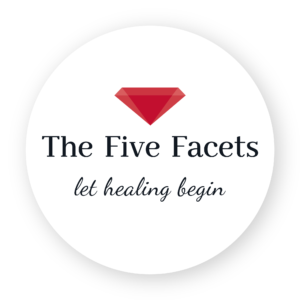 Each of us is born with five distinct facets, fibers that weave together our very existence. They dictate every aspect of our life. They drive our relationships with others and with ourselves. They are at the root of our feelings, our thoughts, and our actions. They are the foundations that unite to form our harmony, our grief, and our healing. These traits are a dynamic part of our lives, they shift as we experience different life events, as we learn and grow, but even so, there is an ever-present hierarchy, one that flexes and evolves. And though these properties are the same for every one of us, the way they blend and mold to each of us is uniquely individual.
Each of us is born with five distinct facets, fibers that weave together our very existence. They dictate every aspect of our life. They drive our relationships with others and with ourselves. They are at the root of our feelings, our thoughts, and our actions. They are the foundations that unite to form our harmony, our grief, and our healing. These traits are a dynamic part of our lives, they shift as we experience different life events, as we learn and grow, but even so, there is an ever-present hierarchy, one that flexes and evolves. And though these properties are the same for every one of us, the way they blend and mold to each of us is uniquely individual.
At the top of my Facets family tree are the Social and the Academic. When I am feeling angst or conflict or trying to solve a problem, I can trace it back to one of these two things: A lack of understanding something and my relationship (be it actual/perceived/desired) with others. By tapping into that conflict and identifying its source, I am then able to turn grief on its head, as I like to say, and ultimately find ways to resolve my strife, whether it is caused by life’s littlest or biggest grievances.
To identify your own hierarchy, use the guide below to think about what drives you, your thoughts, your decisions, your feelings, and your actions. Which of these traits are your go-to’s when it comes to problem solving? Once you’re able to create this list, you can then begin the process of putting together your grief puzzle and subsequently finding the pieces that will lead you down the paths of your own healing journey.
The Academic Facet
The academic facet is our ability to think, to process information. Though we are all born with varying degrees of learning capability, we are each born with a brain and our own, individual intellectual capacity.
The Emotional Facet
The emotional facet is our body’s ability to be moved by external stimuli. Though our response systems can be altered by birth defects and our environments (both physical and natural), we are each born with a body that will respond to experience in some physiological, neurological, or cognitive way.
The Physical Facet
The physical facet pertains to both the body and to our environment. Though we are each born with varying outward and inward bodily traits, as well as diverse external surroundings, we are each born with a body and into a natural setting.
The Social Facet
The social facet is our ability to interact with one another. Though the way in which we relate to others can be altered by birth defects and our environments (both physical and natural), we are each born with some ability to relate and connect with people.
Additionally, studies have shown that some of us connect to the energy of animals and our natural environment. Numerous studies point to increased learning and a decrease in negative/harmful physical symptoms in persons with autism.
The Spiritual Facet
The spiritual facet refers to our very essence. It is our soul, comprised of the very spirit that drives our hopes, dreams, and beliefs. Though it can be associated with and/or molded by various forms of organized religion, it is its own entity, a spirit housed within our body.
- The Journey of a thousand… Get to know the autonomy between loss, grief, and healing.
- The 5 D’s… Gain insight into the types of loss you’re experiencing.
- The 5 Facets… Find hope in your resources.
- The 5 Steps… A step-by-step guide to aid your journey from grief to healing.
- The Power Mantras… Inspiration to live by.
